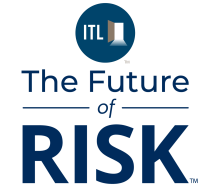The global insurance industry stands at a crossroads in 2025. Economic instability, climate disruption, evolving customer expectations, and fast-paced technology shifts have created a market defined by uncertainty and opportunity. For insurers, the question is no longer just about growth—but about resilience, relevance, and reinvention.
In this landscape, winning is not about being the biggest—it's about being agile, innovative, and customer-obsessed.
Here are five forward-thinking strategies that can help insurers not only survive but thrive in 2025 and beyond.
________________________________________
1. Build Resilience With Real-Time Risk Intelligence
The traditional approach to underwriting and risk assessment—largely historical and static—no longer cuts it in a hyper-dynamic environment. From climate events to cyber threats, risks are changing faster than insurers can traditionally model.
The winning strategy:
Leverage real-time data and AI-driven analytics to assess and price risk dynamically. Insurers must invest in IoT integrations, geospatial intelligence, and machine learning to evaluate risks as they evolve. For instance, property insurers can use satellite imagery and sensor data to adjust policies instantly during extreme weather.
This level of adaptability not only enhances profitability but also builds customer trust—especially when insurers proactively manage risk instead of just reacting to it.
________________________________________
2. Redefine Customer Experience Through Personalization
Today's insurance customers—especially Gen Z and millennials—expect services that are fast, digital-first, and tailored to their needs. Yet many insurers still operate on legacy systems with generalized offerings and one-size-fits-all communication.
The winning strategy:
Use customer data to power hyper-personalized experiences, products, and pricing. AI-powered virtual assistants, predictive analytics, and digital onboarding tools can help offer customized policies in minutes. Beyond convenience, personalization also increases customer retention and boosts cross-selling opportunities.
Additionally, insurers must rethink customer engagement—shifting from a transactional model to one that builds relationships. Think wellness programs for health insurance or safe-driving rewards in auto coverage. The goal is to be present and valuable between claims, not just during them.
________________________________________
3. Operational Agility: Automate, Streamline, Scale
Operational efficiency is no longer about cost-cutting—it's about being fast and flexible in responding to market changes. In 2025, the most successful insurers are those that can launch products quickly, resolve claims swiftly, and make real-time policy adjustments.
The winning strategy:
Adopt cloud-native platforms, invest in low-code/no-code tools, and automate everything from claims processing to compliance reporting. This isn't just about reducing manual work—it's about freeing human talent to focus on high-value, strategic tasks.
Modular product architecture can allow insurers to rapidly introduce micro-insurance products or temporary coverage for niche needs like gig workers, short-term travel, or cyber risk.
________________________________________
4. Embed Sustainability and ESG at the Core
Regulators, investors, and customers are increasingly demanding accountability when it comes to environmental, social, and governance (ESG) factors. Insurers are uniquely positioned to influence responsible behavior—through both their underwriting policies and investment strategies.
The winning strategy:
Develop green insurance products (e.g., lower premiums for eco-friendly homes or EVs), and integrate climate risk assessments into underwriting. Align the investment portfolio with ESG goals, such as supporting renewable energy projects.
Insurers that demonstrate purpose-led values and environmental stewardship are more likely to build customer loyalty, meet compliance requirements, and attract ESG-conscious investors.
________________________________________
5. Foster a Culture of Continuous Learning and Innovation
In an uncertain world, innovation is not a luxury—it's a survival skill. Insurers that cling to legacy thinking risk being left behind by insurtech disruptors and digital-native competitors.
The winning strategy:
Promote a culture of experimentation, invest in digital upskilling, and create innovation labs or partnerships with startups. Encourage teams to pilot new ideas, fail fast, and learn quickly.
Moreover, future-ready talent is critical. As underwriting, claims, and customer service become more tech-driven, reskilling the workforce and redefining roles will help insurers stay ahead of the curve.
________________________________________
Looking Ahead: From Risk Manager to Risk Partner
2025 is not just a test of operational strength—it's a test of vision. Insurers that position themselves as risk partners—not just risk protectors—will win market share and customer loyalty.
By helping businesses and individuals prevent losses, recover faster, and plan ahead, insurers can transform from reactive providers to proactive enablers of resilience.
________________________________________
Conclusion
The insurance industry in 2025 is being shaped by forces that demand transformation—not tweaks. The winning formula is clear:
- Be dynamic in risk intelligence
- Be personal in customer engagement
- Be agile in operations
- Be ethical and future-focused in values
- Be bold in innovation
Those who embrace change will not only withstand the uncertainty—they'll define the future of insurance.








